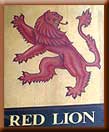 |
 |
 |
 |
|||||||||||||
| Pub Names | ||||||||||||||||
 |
||||||||||||||||
| "Pub names are not just the names of pubs they are key words and phrases that unlock doors to our social and military history, our folklore, our natural heroes and heroines, our natural history, dialects, trades, industries and professions, our sporting interests."
Pub Names of Britain by Leslie Dunkling and Gordon Wright ,1993, J .M. Dent Ltd. Pubs originally had signs outside them so they would be recognized by the illiterate population. Displaying a name would have been a waste of time due to the high rate of illiteracy. The pub sign would have been used to differentiate the pub from other trades people. The sign would originally have been something simple like a bush or a crooked piece of wood. Pubs or inns owned by the church would have displayed traditional Christian signs e.g. the Cross Keys of Saint Peter or an angel. The aristocracy would have borrowed from the heraldic language e.g. the King's Arms . The display of arms on a pub was often used to indicate ownership of that pub by a particular family. The three working pubs of Crick have two out of the three most popular names of all: Firstly, the Red Lion and secondly,the Royal Oak. The original meaning of our pub names both past and present is given below. RED LION: This is the most popular of all the pub names (at least 600 in 1986).The Red Lion is a reference to John of Gaunt's heraldic sign. John of Gaunt was one of the most influential people of the fourteenth century as well as being the ancestor of the House of Tudor. It is also a heraldic reference to Scotland. ROYAL OAK:This is the second most popular pub name (well over 500 pubs bearing the name in the 1980s). The name comes from the story of Charles II and his aide Colonel Carless hiding from the Roundhead soldiers in the Boscobel Oak, near Shifnal, Salop and avoiding detection. After the restoration of Charles II to the throne , the 29th May, the king's birthday, was a day of celebration known as 'Royal Oak Day'. WHEATSHEAF:This has been a common name since the seventeenth century and is found in several coats of arms eg the Worshipful Company of Bakers (1486). It is also one of the devices on the arms of the Brewers' Company. SHOULDER OF MUTTON: This was a popular meat dish in inns of former times. It can also indicate that the innkeeeper was a butcher. FLYING HORSE:This was used as a heraldic sign by the Knights Templar so the early examples of this sign may refer to this. Otherwise it ultimately refers to Pegasus, the winged horse of Greek mythology. Stage-coaches were also referred to as "flying machines" originally and so their horses were known as "flying horses". WHARF:The pub would be situated by a built up section of a bank where boats could be unloaded. GEORGE HOTEL:This either refers to St George (the patron saint of England) or one of the kings who were named George. |
||||||||||||||||
| Top of Page | ||||||||||||||||